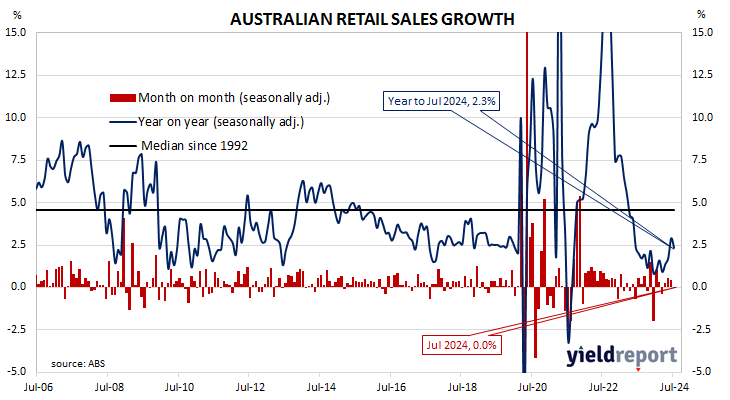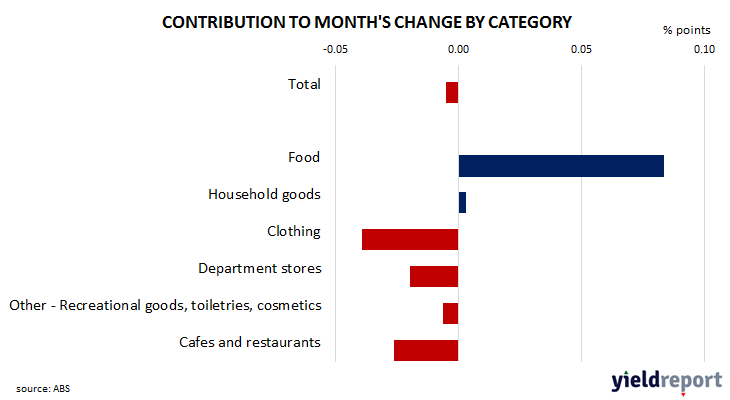Summary: Retail sales flat in July, less than expected; up 2.3% on 12-month basis; ANZ: stable result follows solid prints in May, June; longer-term ACGB yields rise; rate-cut expectations largely unchanged; Westpac: implies real per capita retail sales soft, materially weaker; largest influence on result from food sales.
Growth figures of domestic retail sales spent most of the 2010s at levels below the post-1992 average. While economic conditions had been generally favourable, wage growth and inflation rates were low. Expenditures on goods then jumped in the early stages of 2020 as government restrictions severely altered households’ spending habits. Households mostly reverted to their usual patterns as restrictions eased in the latter part of 2020 and throughout 2021.
According to the latest ABS figures, total retail sales remained unchanged after rounding on a seasonally adjusted basis in July. The result was less than the 0.3% increase which had been generally expected as well as June’s 0.5% increase. Sales increased by 2.3% on an annual basis, down from June’s comparable figure of 2.9%.
“The stable result in July follows solid prints in May and June during EOFY sales, with the series up 1.0% over the last three months,” said ANZ economist Madeline Dunk. “Given cost-of-living pressures, households are trading down and waiting for sales events to help stretch their money further.”
The update was released on the same day as the private credit figures and long-term Commonwealth Government bond yields increased modestly on the day while short-term yields finished steady. By the close of business, the 3-year ACGB yield had returned to its starting point at 3.54% while 10-year and 20-year yields both finished 2bps higher at 3.98% and 4.36% respectively.
Expectations regarding rate cuts in the next twelve months were largely unchanged overall, with a February 2025 rate cut fully priced in. Cash futures contracts implied an average of 4.33% in September, 4.32% in October and 4.275% in November. February 2025 contracts implied 4.08% while August 2025 contracts implied 3.485%, 85bps less than the current cash rate.
“This was clearly a disappointing result given the context of tax cuts,” said Westpac economist Matthew Hassan. “While other indicators had suggested relatively little of the boost to income was spent in July, to get a ‘donut’ on retail sales despite this, price inflation and population growth implies real per capita retail sales were not just soft but weakened materially in July. The August data-flow should help clarify how much of this is monthly noise and how much is a story of ongoing weakness”
Retail sales are typically segmented into six categories (see below), with the “Food” segment accounting for 40% of total sales. Accordingly, the largest influence on the month’s total came from this segment where sales rose by 0.2%.



